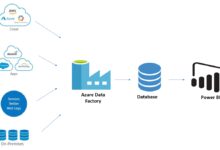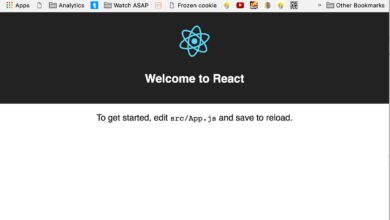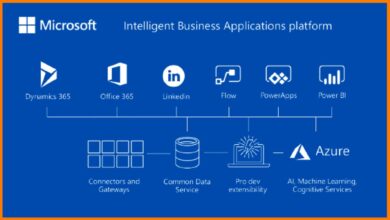Sign in to azure portal: 5 Easy Steps to Sign In to Azure Portal Like a Pro
Signing in to the Azure portal might seem simple, but doing it right ensures secure, efficient access to your cloud resources. Whether you’re a beginner or brushing up on best practices, this guide walks you through every step with clarity and precision.
Understanding the Azure Portal and Why You Need to Sign In

The Azure portal is Microsoft’s web-based interface for managing cloud services, virtual machines, storage, networking, and more. It acts as the central command center for all your Azure resources. To access this powerful platform, you must first sign in to Azure portal using valid credentials.
What Is the Azure Portal?
The Azure portal, accessible at portal.azure.com, is a unified dashboard that allows users to deploy, configure, monitor, and manage Azure services through a graphical user interface (GUI). Unlike command-line tools like Azure CLI or PowerShell, the portal provides an intuitive visual layout ideal for beginners and administrators alike.
- It supports role-based access control (RBAC) for team collaboration.
- Offers real-time monitoring via dashboards and alerts.
- Enables quick deployment of templates and automation scripts.
“The Azure portal is the gateway to your cloud infrastructure—secure access is non-negotiable.” — Microsoft Azure Documentation
Why Signing In Is Essential
Without signing in, you can’t interact with any Azure resources. Authentication verifies your identity and authorizes access based on assigned roles and permissions. Whether you’re launching a virtual machine or analyzing logs in Azure Monitor, the first mandatory step is always to sign in to Azure portal.
- Ensures only authorized users access sensitive data.
- Enables audit trails and activity logging.
- Supports multi-factor authentication (MFA) for enhanced security.
How to Sign In to Azure Portal: Step-by-Step Guide
Now that you understand its importance, let’s walk through the actual process of how to sign in to Azure portal. This section breaks down each step clearly so even new users can follow along without confusion.
Step 1: Navigate to the Official Azure Portal URL
Open your preferred web browser and go to https://portal.azure.com. Always ensure you’re visiting the official Microsoft domain to avoid phishing attacks. Never click on suspicious links from emails claiming to be from Azure.
- Supported browsers include Microsoft Edge, Google Chrome, Firefox, and Safari.
- Clear your cache regularly to prevent login issues.
- Avoid using public computers for sensitive logins unless absolutely necessary.
Step 2: Enter Your Work or School Account Email
On the sign-in page, enter the email address associated with your Azure subscription. This is typically a work or school account (e.g., user@company.com), not a personal Microsoft account (like Outlook.com), unless specifically configured.
- If you have multiple accounts, select the correct one from the dropdown.
- Use the “Sign in with a different account” option if needed.
- Ensure the domain matches your organization’s Azure Active Directory (Azure AD) tenant.
Step 3: Provide Your Password and Complete Authentication
After entering your email, click “Next” and input your password. If multi-factor authentication (MFA) is enabled, you’ll be prompted to verify your identity via phone call, text message, authenticator app, or biometric confirmation.
- MFA significantly reduces the risk of unauthorized access.
- Recommended: Use the Microsoft Authenticator app for faster, more secure verification.
- Lost access? Use the “Can’t access your account?” link to recover it.
Common Issues When Trying to Sign In to Azure Portal
Even with a straightforward process, users often encounter obstacles when trying to sign in to Azure portal. Understanding these common problems helps you troubleshoot quickly and minimize downtime.
sign in to azure portal – Sign in to azure portal menjadi aspek penting yang dibahas di sini.
Incorrect Credentials or Forgotten Password
One of the most frequent issues is entering the wrong username or password. This could happen due to caps lock, incorrect email, or expired credentials.
- Always double-check your email spelling and password case sensitivity.
- Use the “Forgot password?” option to reset it securely.
- Organizations should enforce regular password rotation policies.
Account Locked or Disabled
If you’ve entered incorrect credentials too many times, your account may be temporarily locked. Alternatively, your admin might have disabled your account due to inactivity or policy violations.
- Wait 15–30 minutes before retrying after a lockout.
- Contact your Azure administrator to check account status.
- Ensure your license is active and assigned correctly.
Browser or Cache-Related Problems
Sometimes, the issue isn’t with your account but with your browser. Corrupted cookies, outdated versions, or disabled JavaScript can prevent successful login.
- Clear browsing data including cookies and cache.
- Try incognito/private browsing mode.
- Update your browser to the latest version.
Using Different Account Types to Sign In to Azure Portal
Not all users sign in the same way. Depending on your setup, you might use different types of accounts to sign in to Azure portal. Knowing which one applies to you ensures smoother access.
Work or School Accounts (Azure AD)
Most enterprise users access Azure through a work or school account managed by Azure Active Directory. These accounts are created and controlled by your organization’s IT department.
- Centralized management via Azure AD admin center.
- Supports single sign-on (SSO) across Microsoft 365 and other apps.
- Can be synchronized with on-premises Active Directory using Azure AD Connect.
Microsoft Personal Accounts
Individuals testing Azure or using free tiers may use a personal Microsoft account (e.g., @outlook.com, @hotmail.com). While possible, this is less common in professional environments.
- Limited administrative capabilities compared to Azure AD.
- Best suited for learning, small projects, or sandbox environments.
- Can be converted to a work account later if needed.
Guest Users and External Identities
Organizations often invite external collaborators as guest users. These individuals sign in using their own email addresses and are governed by Azure AD B2B collaboration policies.
- Guests appear in the directory with a “#EXT#” suffix.
- Access is controlled via invitation and RBAC assignments.
- Admins can revoke access anytime through the Azure portal.
Security Best Practices After You Sign In to Azure Portal
Successfully signing in is just the beginning. Once you’ve sign in to Azure portal, maintaining security is critical. Follow these best practices to protect your environment from threats.
Enable Multi-Factor Authentication (MFA)
MFA adds an extra layer of protection by requiring two or more verification methods. Even if someone steals your password, they can’t log in without the second factor.
sign in to azure portal – Sign in to azure portal menjadi aspek penting yang dibahas di sini.
- Use the Microsoft Authenticator app for push notifications.
- Set up backup methods like SMS or phone calls.
- Enforce MFA for all privileged accounts via Conditional Access policies.
Apply Role-Based Access Control (RBAC)
Rather than giving everyone full access, assign roles based on job responsibilities. This principle of least privilege minimizes the risk of accidental or malicious changes.
- Common roles: Owner, Contributor, Reader, Virtual Machine Contributor.
- Create custom roles for specific needs.
- Regularly audit role assignments to remove unnecessary access.
Monitor Sign-In Activity and Alerts
Azure provides tools like Azure Monitor and Azure AD Sign-In Logs to track who accessed the portal and when. Suspicious activities can trigger alerts.
- Review sign-in logs in the Azure AD portal.
- Set up alerts for failed logins or logins from unusual locations.
- Integrate with Azure Sentinel for advanced threat detection.
Advanced Access Methods: SSO, API, and CLI
Beyond the standard browser login, there are advanced ways to sign in to Azure portal or interact with Azure resources programmatically. These methods enhance efficiency and automation.
Single Sign-On (SSO) Integration
SSO allows users to authenticate once and gain access to multiple applications without re-entering credentials. It’s widely used in enterprise environments.
- Integrated with identity providers like Okta, Ping Identity, or AD FS.
- Reduces password fatigue and improves user experience.
- Configured via Enterprise Applications in Azure AD.
Azure CLI and PowerShell Authentication
For automation and scripting, developers and DevOps engineers use Azure CLI or PowerShell. These tools require authentication but don’t rely on the portal interface.
- Run
az loginin CLI to start interactive sign-in. - Use service principals for non-interactive scripts.
- Supports device code flow for headless environments.
Using Managed Identities for Applications
Managed identities allow Azure services (like VMs or App Services) to authenticate to other resources without storing credentials in code.
- Eliminates the need for hardcoded secrets.
- Automatically handles token acquisition and renewal.
- Available in system-assigned and user-assigned forms.
Troubleshooting Tips: What to Do If You Can’t Sign In
If you’re unable to sign in to Azure portal, don’t panic. Use this structured troubleshooting approach to identify and resolve the issue efficiently.
Verify Network and DNS Settings
Sometimes, connectivity issues aren’t related to your account but to your network. Firewalls, proxy servers, or DNS misconfigurations can block access to Azure endpoints.
- Check if
portal.azure.comresolves correctly. - Ensure outbound HTTPS (port 443) is allowed.
- Test from a different network to isolate the problem.
Check Azure Service Health
Occasionally, Microsoft experiences outages or degraded performance in certain regions. Before assuming it’s your fault, check the Azure Status Dashboard.
sign in to azure portal – Sign in to azure portal menjadi aspek penting yang dibahas di sini.
- Visit https://status.azure.com for real-time updates.
- Look for red or yellow indicators affecting the portal or authentication services.
- Subscribe to health alerts for proactive notifications.
Contact Your Administrator or Microsoft Support
If all else fails, reach out to your Azure administrator or open a support ticket with Microsoft. Provide detailed information such as error codes, timestamps, and screenshots.
- Include the sign-in error code (e.g., 50076, 53003).
- Describe what changed recently (e.g., password reset, MFA setup).
- Use the Azure Help + Support blade to initiate a request.
Optimizing Your Azure Portal Experience After Signing In
Once you’ve successfully sign in to Azure portal, you can enhance your productivity by customizing the interface and leveraging built-in tools.
Customize Your Dashboard
The Azure dashboard is fully customizable. Pin frequently used resources, charts, and monitoring widgets for quick access.
- Click “Edit” to add or rearrange tiles.
- Save multiple dashboards for different roles or projects.
- Share dashboards with team members for collaborative oversight.
Use Quickstart Templates and Marketplaces
Speed up deployments by using pre-built templates from the Azure Marketplace or GitHub.
- Search for solutions like WordPress, Jenkins, or AI models.
- Deploy with just a few clicks using ARM templates.
- Review pricing and compatibility before deployment.
Leverage Azure Advisor for Optimization
Azure Advisor analyzes your usage and provides personalized recommendations for cost, performance, security, and reliability.
- Access it from the left-hand navigation menu.
- Follow actionable steps to improve efficiency.
- Set up email alerts for new recommendations.
How do I reset my Azure portal password?
If you’ve forgotten your password, go to the Azure sign-in page and click “Forgot password?” Follow the prompts to verify your identity and create a new password. If you’re using a work or school account, your organization may manage password resets through Azure AD Self-Service Password Reset (SSPR).
Can I sign in to Azure portal without MFA?
Yes, if MFA is not enforced by your administrator. However, Microsoft strongly recommends enabling MFA for all users, especially those with administrative privileges, to enhance security.
sign in to azure portal – Sign in to azure portal menjadi aspek penting yang dibahas di sini.
Why am I getting a ‘user not found’ error when trying to sign in?
This error usually means the email you entered isn’t registered in the Azure AD tenant you’re trying to access. Double-check the email address and ensure you’re signing in to the correct directory. You may need to switch directories if you have access to multiple.
Is it safe to sign in to Azure portal from public Wi-Fi?
It’s not recommended. Public Wi-Fi networks are often unsecured and can expose your credentials to eavesdropping. If you must log in, use a virtual private network (VPN) and ensure MFA is enabled.
How can I switch between multiple Azure directories?
After signing in, click your profile icon in the top-right corner and select “Switch directory.” Choose the desired tenant from the list. You must have access to the directory to switch to it.
Signing in to the Azure portal is the foundational step to managing your cloud environment. From navigating the login process to troubleshooting issues and enhancing security, this guide has covered everything you need to know. By following best practices—like enabling MFA, using RBAC, and monitoring sign-in activity—you ensure both access and protection. Whether you’re a developer, administrator, or guest user, mastering how to sign in to Azure portal empowers you to make the most of Microsoft’s powerful cloud platform.
sign in to azure portal – Sign in to azure portal menjadi aspek penting yang dibahas di sini.
Recommended for you 👇
Further Reading:









